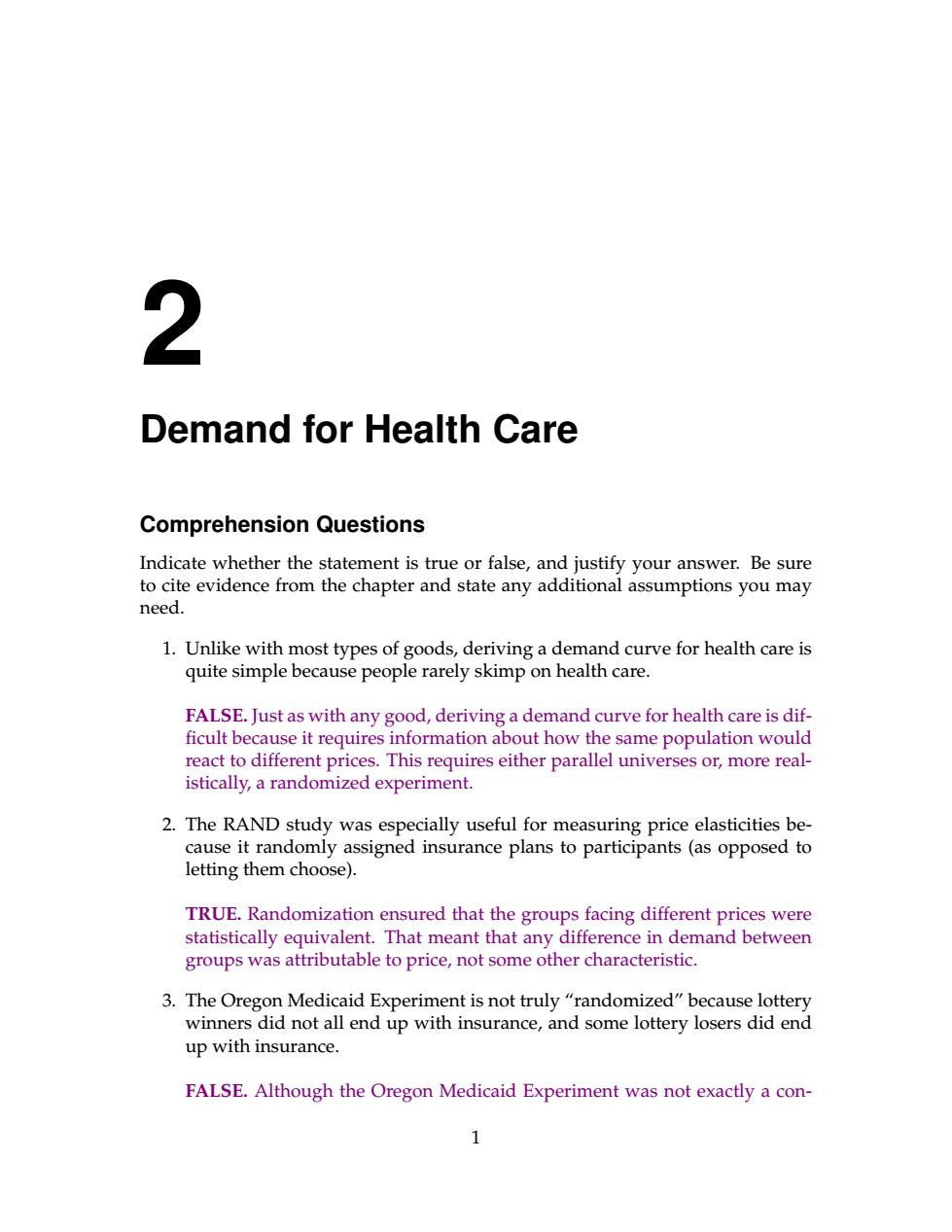正在加载图片...

Demand for Health Care Comprehension Questions Indicate whether the statement is true or false,and justify your answer.Be sure to cite evidence from the chapter and state any additional assumptions you may need. 1.Unlike with most types of goods,deriving a demand curve for health care is quite simple because people rarely skimp on health care. FALSE.Just as with any good,deriving a demand curve for health care is dif- ficult because it requires information about how the same population would react to different prices.This requires either parallel universes or,more real- istically,a randomized experiment. 2.The RAND study was especially useful for measuring price elasticities be- cause it randomly assigned insurance plans to participants(as opposed to letting them choose). TRUE.Randomization ensured that the groups facing different prices were statistically equivalent.That meant that any difference in demand between groups was attributable to price,not some other characteristic. 3.The Oregon Medicaid Experiment is not truly"randomized"because lottery winners did not all end up with insurance,and some lottery losers did end up with insurance. FALSE.Although the Oregon Medicaid Experiment was not exactly a con2 Demand for Health Care Comprehension Questions Indicate whether the statement is true or false, and justify your answer. Be sure to cite evidence from the chapter and state any additional assumptions you may need. 1. Unlike with most types of goods, deriving a demand curve for health care is quite simple because people rarely skimp on health care. FALSE. Just as with any good, deriving a demand curve for health care is dif- ficult because it requires information about how the same population would react to different prices. This requires either parallel universes or, more realistically, a randomized experiment. 2. The RAND study was especially useful for measuring price elasticities because it randomly assigned insurance plans to participants (as opposed to letting them choose). TRUE. Randomization ensured that the groups facing different prices were statistically equivalent. That meant that any difference in demand between groups was attributable to price, not some other characteristic. 3. The Oregon Medicaid Experiment is not truly “randomized” because lottery winners did not all end up with insurance, and some lottery losers did end up with insurance. FALSE. Although the Oregon Medicaid Experiment was not exactly a con- 1